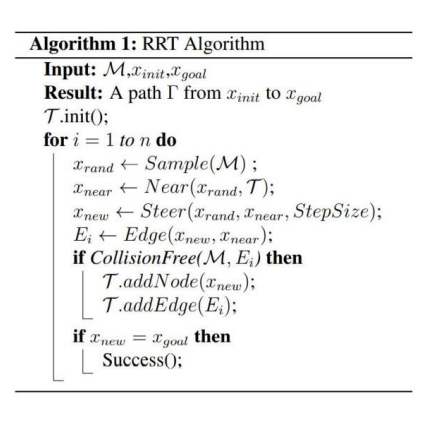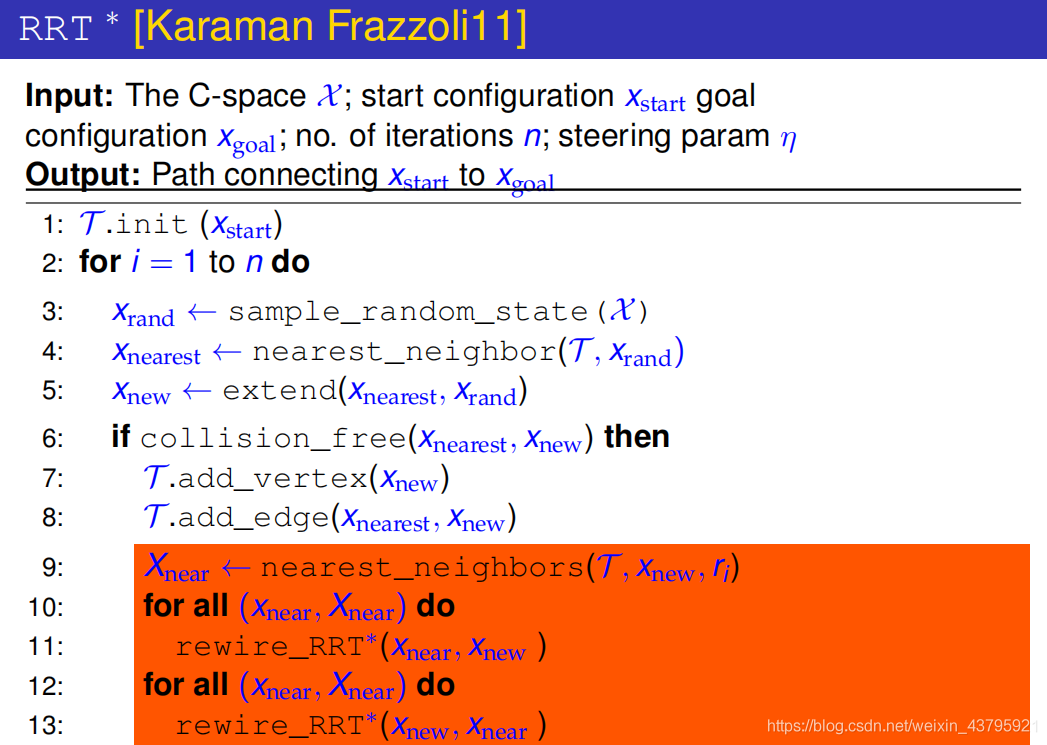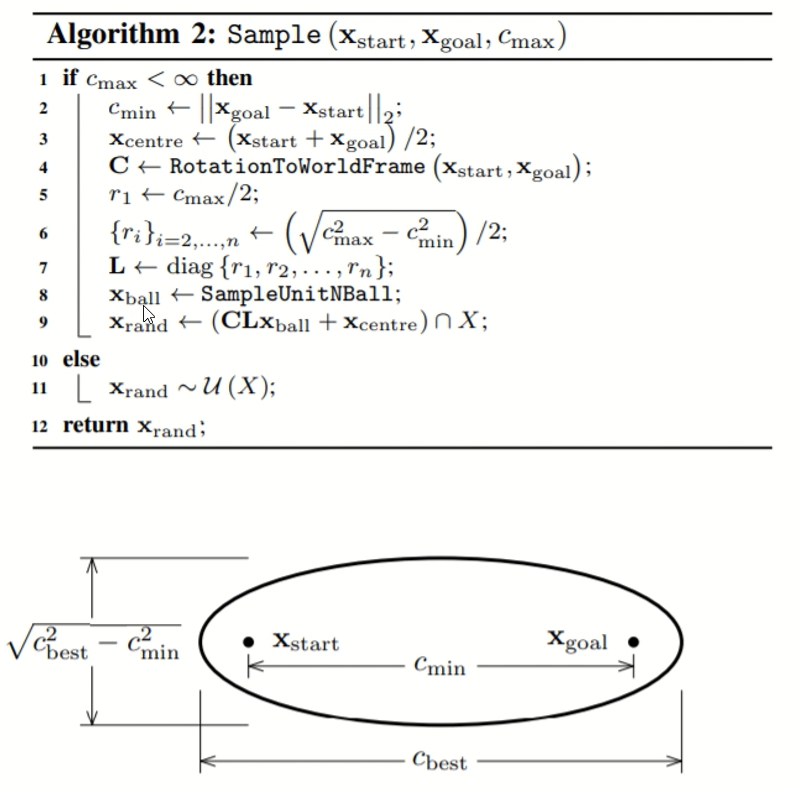1
2
3
4
5
6
7
8
9
10
11
12
13
14
15
16
17
18
19
20
21
22
23
24
25
26
27
28
29
30
31
32
33
34
35
36
37
38
39
40
41
42
43
44
45
46
47
48
49
50
51
52
53
54
55
56
57
58
59
60
61
62
63
64
65
66
67
68
69
70
71
72
| figure(1);
ImpRgb=imread('newmap.png');
Imp=rgb2gray(ImpRgb);
imshow(Imp)
xL=size(Imp,1);
yL=size(Imp,2);
hold on
plot(x_I, y_I, 'ro', 'MarkerSize',5, 'MarkerFaceColor','r');
plot(x_G, y_G, 'go', 'MarkerSize',5, 'MarkerFaceColor','g');
count=1;
for iter = 1:3000
p_rand=[];
p_rand(1)=ceil(rand()*xL);
p_rand(2)=ceil(rand()*yL);
p_near=[];
min_distance = 1000;
for i=1:count
distance = sqrt( ( T.v(i).x - p_rand(1) )^2 + ( T.v(i).y - p_rand(2) )^2 );
if distance < min_distance
min_distance = distance;
index = i;
end
end
p_near(1) = T.v(index).x;
p_near(2) = T.v(index).y;
p_new=[];
p_new(1) = p_near(1) + round( ( p_rand(1)-p_near(1) ) * Delta/min_distance );
p_new(2) = p_near(2) + round( ( p_rand(2)-p_near(2) ) * Delta/min_distance );
if ~collisionChecking(p_near,p_new,Imp)
continue;
end
count=count+1;
T.v(count).x = p_new(1);
T.v(count).y = p_new(2);
T.v(count).xPrev = p_near(1);
T.v(count).yPrev = p_near(2);
T.v(count).dist = min_distance;
new_distance = sqrt( ( p_new(1) - x_G )^2 + ( p_new(2) - y_G )^2 );
if new_distance <= Thr
plot(p_new(1), p_new(2), 'bo', 'MarkerSize',2, 'MarkerFaceColor','b');
line( [p_new(1) p_near(1)], [p_new(2) p_near(2)], 'Marker','.','LineStyle','-');
line( [x_G p_new(1)], [y_G p_new(2)], 'Marker','.','LineStyle','-');
break;
end
plot(p_new(1), p_new(2), 'bo', 'MarkerSize',2, 'MarkerFaceColor','b');
line( [p_new(1) p_near(1)], [p_new(2) p_near(2)], 'Marker','.','LineStyle','-');
hold on;
pause(0.1);
end
|



